Are you searching for birds that start with the letter D? Check out this comprehensive list of birds that start with D and discover their locations, habitats, and behavior. You will find everything from woodpeckers and flycatchers to pigeons and hummingbirds. Let’s dive in!
Dark-eyed Junco – Junco hyemalis
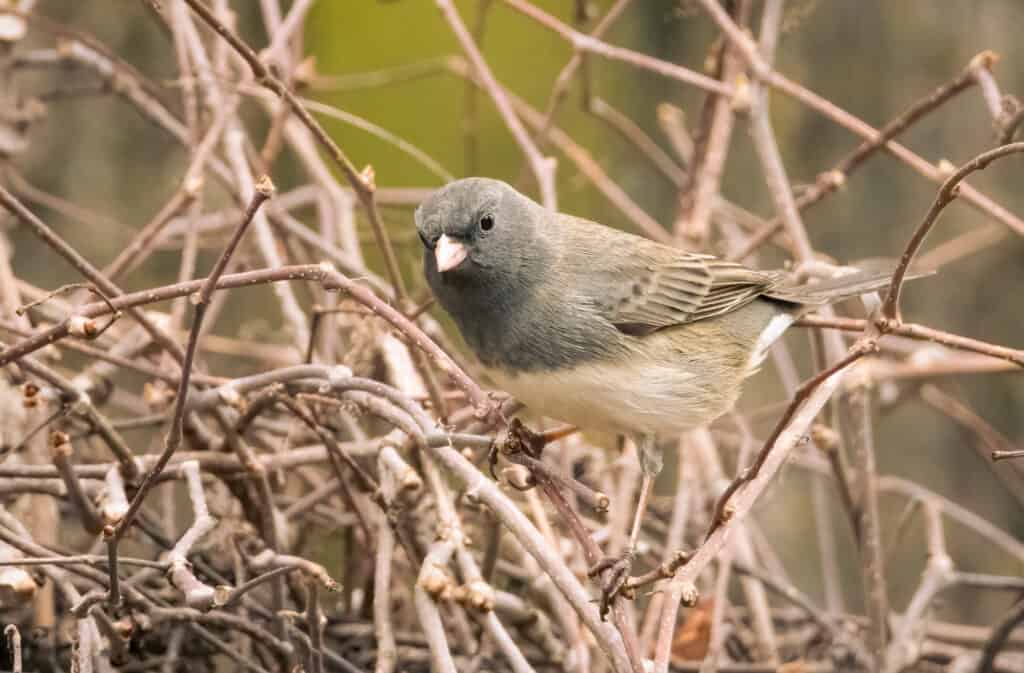
Check out these birds that start with D! Dark-eyed juncos live year-round in western mountains
©iStock.com/Luc Pouliot
The dark-eyed junco is a plump little sparrow with gray, black, and white markings. These birds breed throughout Canada and Alaska and winter across most of the United States. Although some populations live year-round in the western mountains. This species is an abundant forest bird, often seen on woodland hikes or near highly-vegetated backyards, especially in flocks around feeders. They prefer partially wooded areas and like to stay on the ground.
Dickcissel – Spiza americana
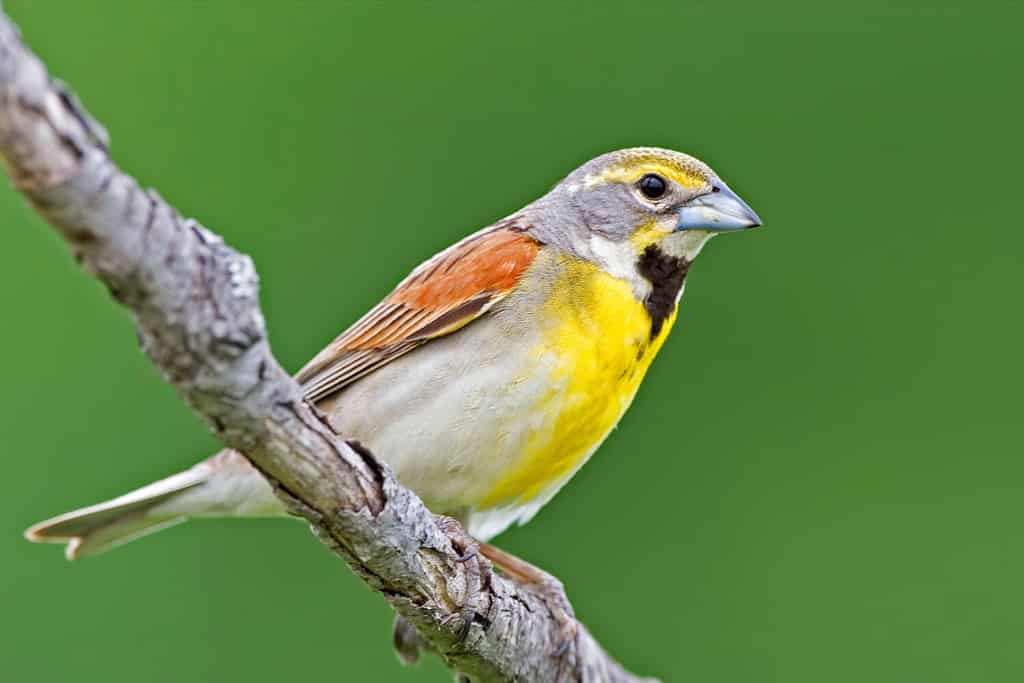
Dickcissels lives in the prairies of the Midwest
©Harold Stiver/Shutterstock.com
The dickcissel is a bunting and is named after its curt song. These birds live in the prairies of the Midwest in the United States during the breeding season. In the winter, they migrate to the Mexican coasts, Central America, and the northern tip of South America. Their coloring features warm chestnut and gray. But their bright yellow chests with a distinctive black V marking are their most discernable features.
Double-crested Cormorant – Nannopterum auritum
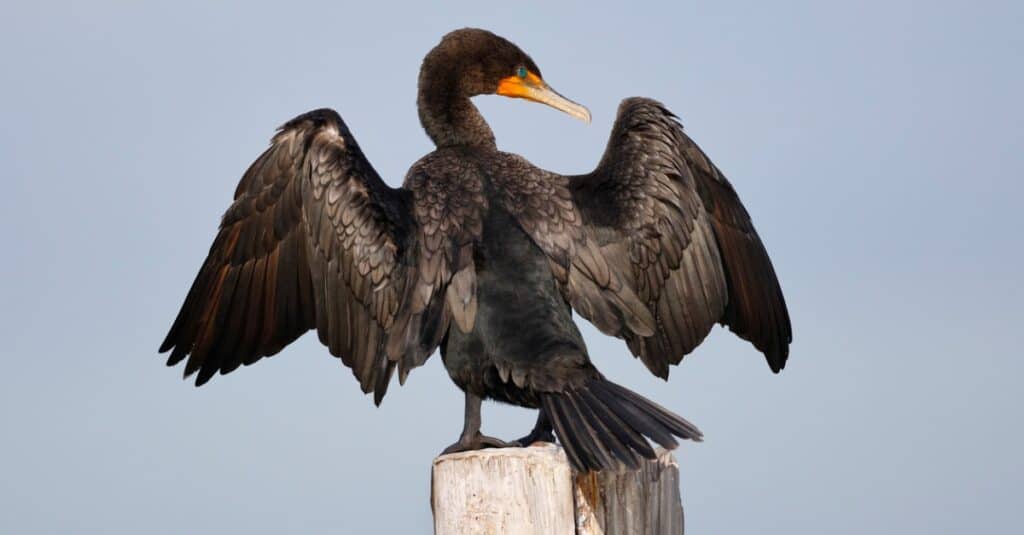
The double-crested cormorant lives around fresh and saltwater
©iStock.com/BrianLasenby
This matte-black waterbird is a relative of booby birds and frigatebirds. They live throughout the United States and some parts of Canada and Mexico. And you will find them around freshwater and saltwater habitats, typically any body of water that has abundant fish. But you are likely to see them perched near water, drying off their feathers and digesting their food. Look for them on docks and rocky islands.
Dovekie – Alle alle
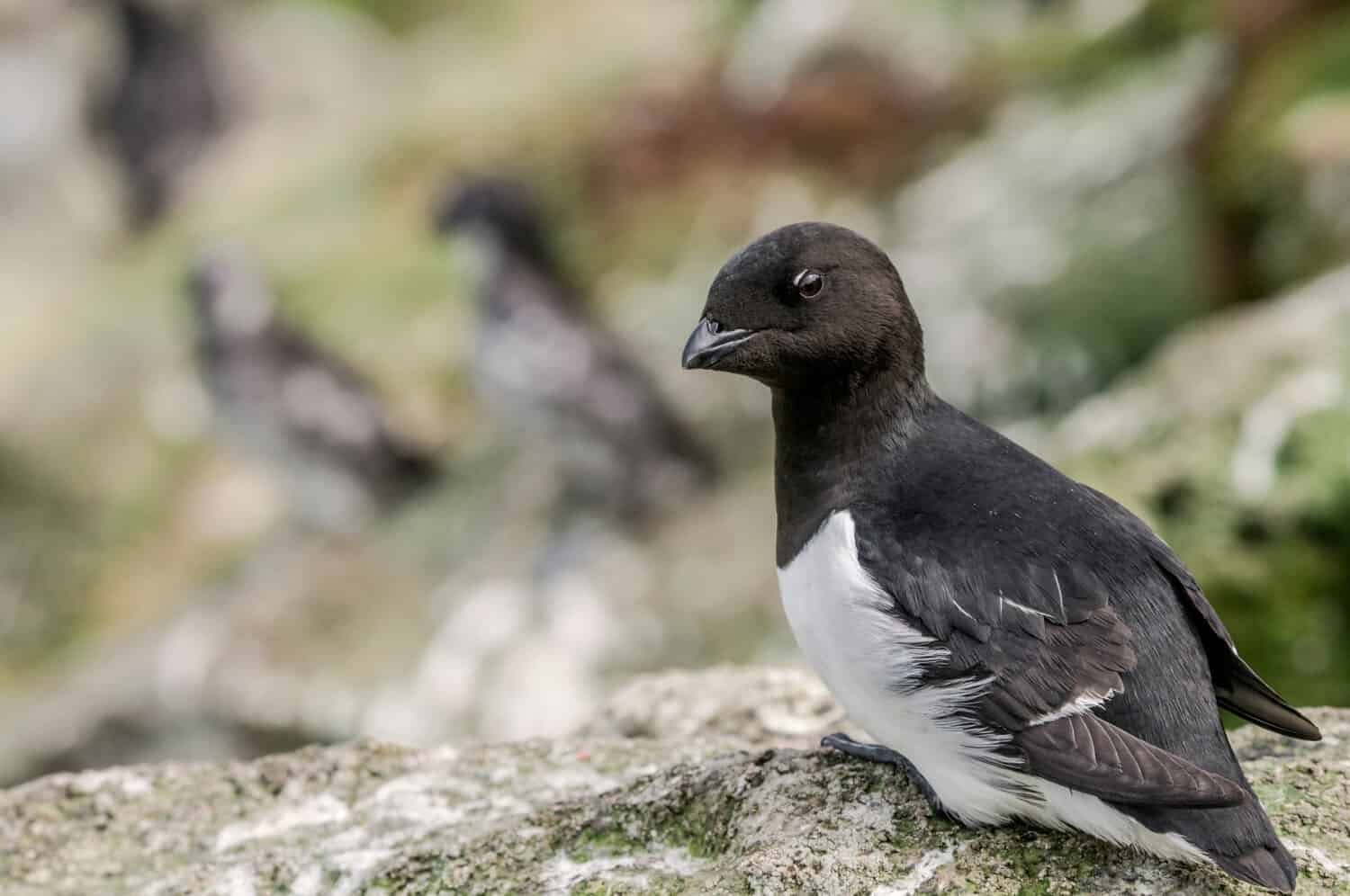
The dovekie lives in the far northern regions
©Nick Pecker/Shutterstock.com
While their populations in North America are abundant, very few people actually get to see them in their natural habitat. Dovekies live in the far northern regions of the Arctic and North Atlantic oceans. They inhabit pack ice as far north as Greenland and may travel as far south as the Northeastern United States. They live in enormous colonies on rocky cliffs, and they gather in large flocks to dive for zooplankton.
Downy Woodpecker – Dryobates pubescens
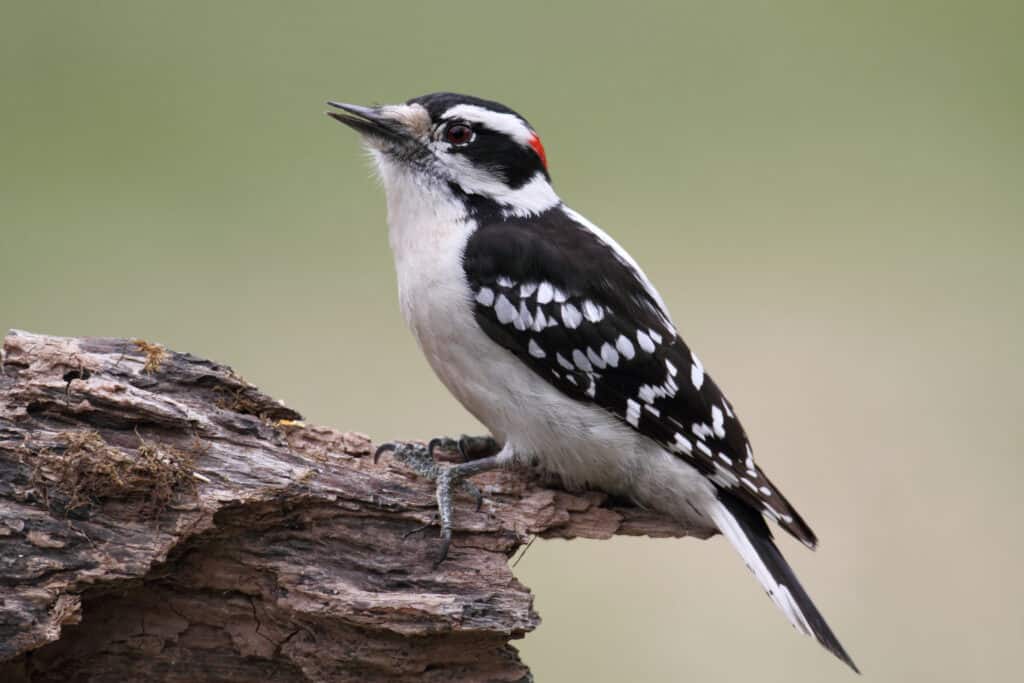
The downy
woodpecker
is common at bird feeders
©Steve Byland/Shutterstock.com
Downy woodpeckers are little energetic birds of North America, where they live year-round. They live throughout most of the United States and Canada, where you will find them in woodlots, backyards, and parks. In fact, they are the most common woodpeckers to visit bird feeders. They look almost exactly like hairy woodpeckers but are slightly smaller. During the winter, you can find them in mixed flocks, usually among chickadees and nuthatches.
Dunlin – Calidris alpina
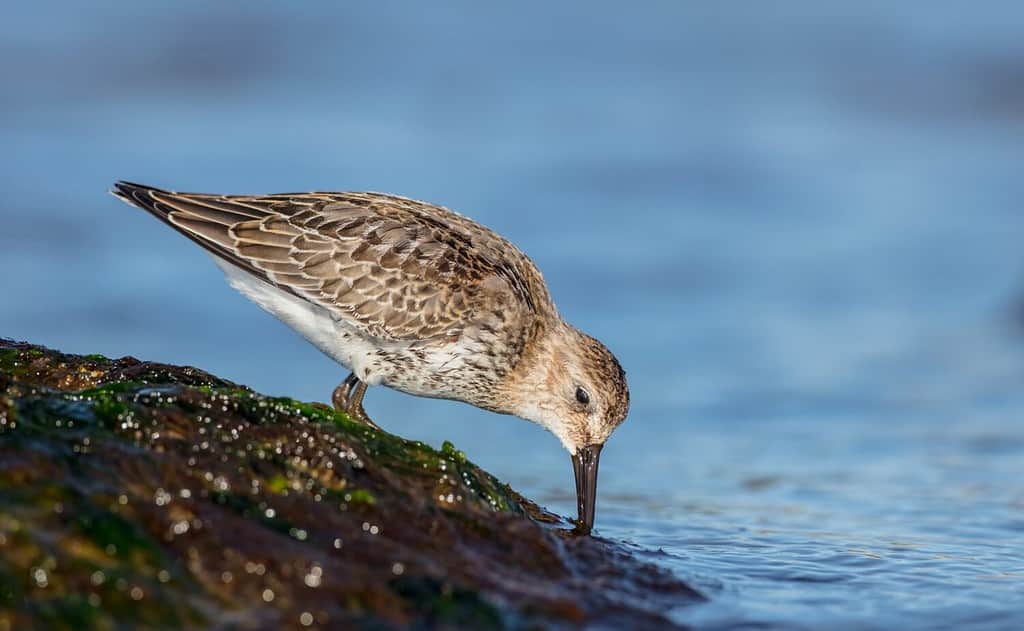
Dunlins are a species of sandpiper
©Simonas Minkevicius/Shutterstock.com
The dunlin is a shorebird and species of sandpiper. These dazzling birds feature black, gray, white, and rusty brown plumage, with small, round eyes and long bills. You will find this species nesting in the Arctic regions of the world, such as Northern Canada and along the coast of Alaska. They migrate to the coasts of the United States and Mexico during the winter, where they live near bays, shorelines, and estuaries.
Dusky Flycatcher – Empidonax oberholseri
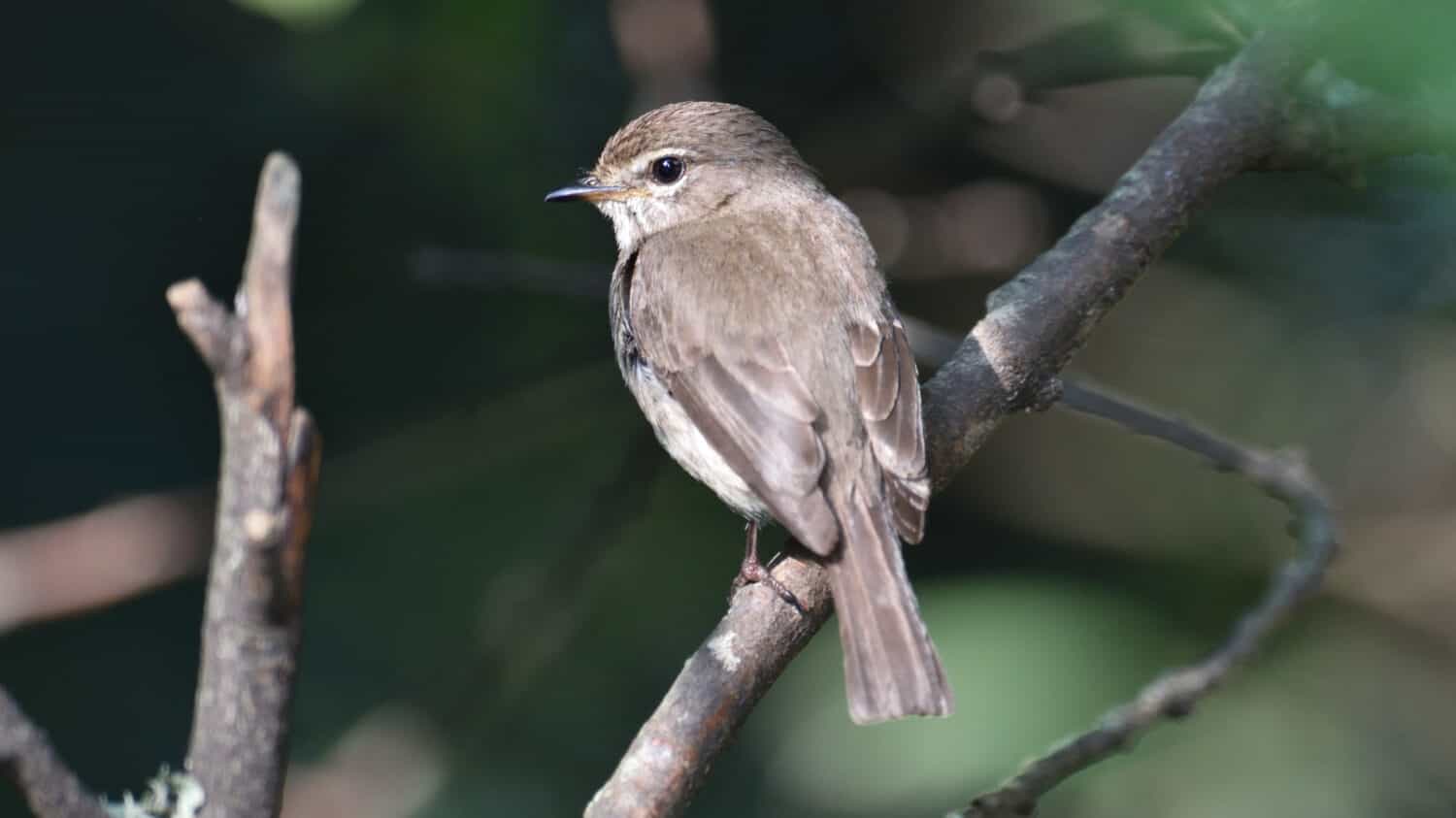
Dusky flycatchers breed in Canada and the Northwest U.S.
©Clayton Burne/Shutterstock.com
The dusky flycatcher is a little songbird of Western North America. True to its name, this species is a dusky gray with white and dark brown accents. They breed in Canada and the Northwestern U.S. before migrating to Mexico. You can find them in open woodlands, aspen groves, scrub, and streamside thickets. And they like to stay low in vegetation, where they forage for flying insects.
Dusky Grouse – Dendragapus obscurus
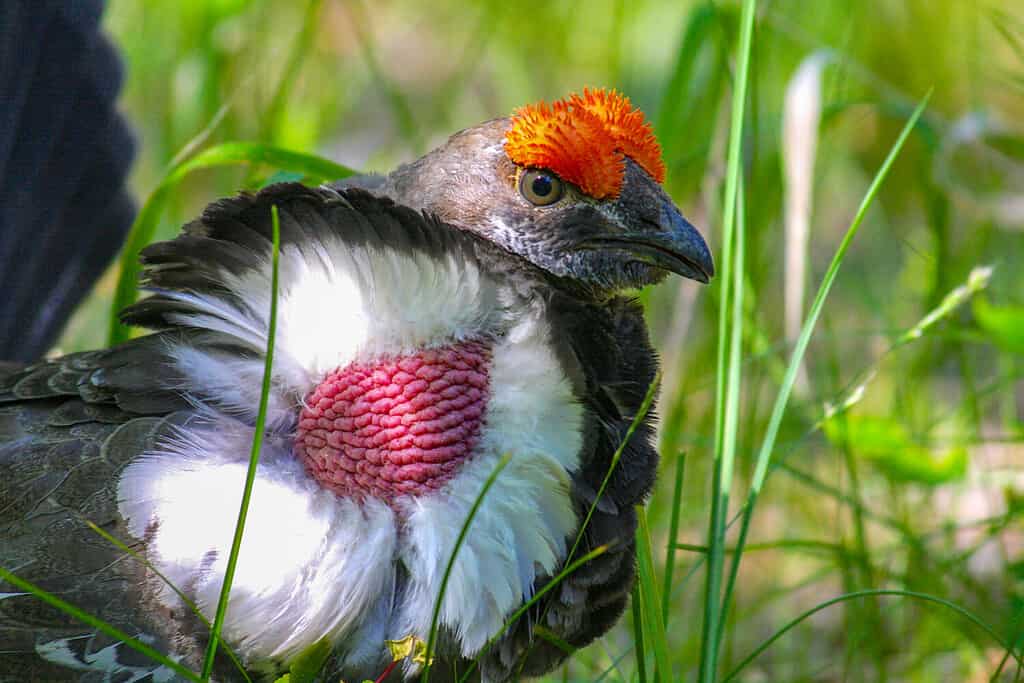
Dusky grouse live in mountain forests
©CSNafzger/Shutterstock.com
The dusky grouse is a large game bird of North America. It lives in the mountain forests of Canada and the Western United States, where it stays inconspicuous for most of the year. This bird features beautiful plumage of grayish-blue, red, and brown. Early spring is the best time to find this grouse when males are strutting and making calls for the breeding season. This species often gets confused with the similar blue grouse.
Dusky-capped Flycatcher – Myiarchus tuberculifer
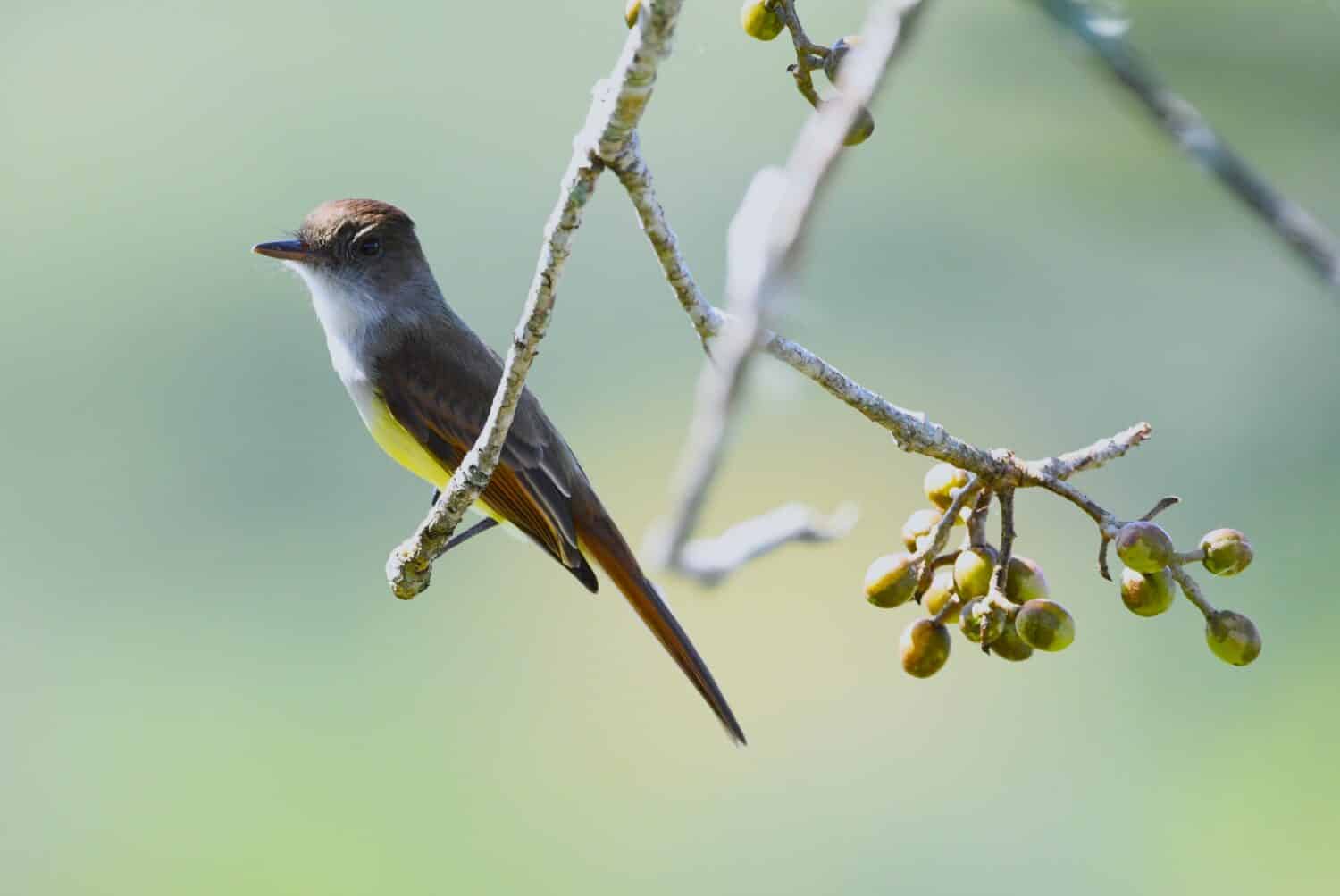
The dusky-capped flycatcher likes to stay inside tree foliage
©Sebastian Schwegmann2/Shutterstock.com
With their dull colors and foraging behavior of staying within dense foliage, the dusky-capped flycatcher can be difficult to find. These small, slim birds are gray, rusty brown, and light yellow and like to stay inside the foliage of trees. This species is common in South America, Central America, and Mexico. But you can also find it in the Southwestern United States during the breeding season, mainly in Arizona and New Mexico.
Dalmatian Pelican – Pelicanus crispus
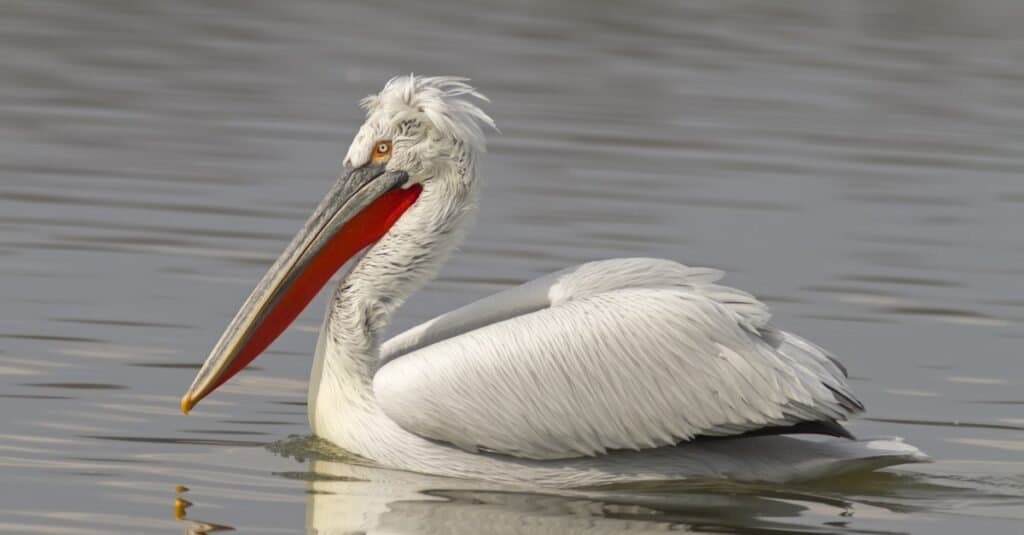
A
Dalmatian
Pelican (Pelecanus crispus) on the surface of Kerkini lake, northern Greece
©Georgios Alexandris/Shutterstock.com
The Dalmatian pelican is a unique animal. They are the largest pelican and one of the largest freshwater birds in the world. Plus, Dalmatian pelicans are the largest birds that start with D. This impressive bird can grow up to six feet long, weigh over 30 pounds, and feature an almost 12-foot wingspan! It lives throughout Central Eurasia, where it inhabits lakes, rivers, and estuaries. And it migrates short distances, typically returning to the same breeding site each year.
Dark-billed Cuckoo – Coccyzus melacoryphus

Dark-billed cuckoos live throughout South America
©Traveller MG/Shutterstock.com
This tropical cuckoo features gray, brown, and citron-yellow plumage, with long tails and long bills. The dark-billed cuckoo has a large range throughout South America, where they live in most countries, except Chile, where they are only vagrants. You can even find them in the Galapagos Islands. And they live in many forested habitats, such as tropical deciduous, mature secondary, mangroves, and gallery forests. And they typically like to stay in the lowlands.
Dark-chanting Goshawk – Melierax metabates
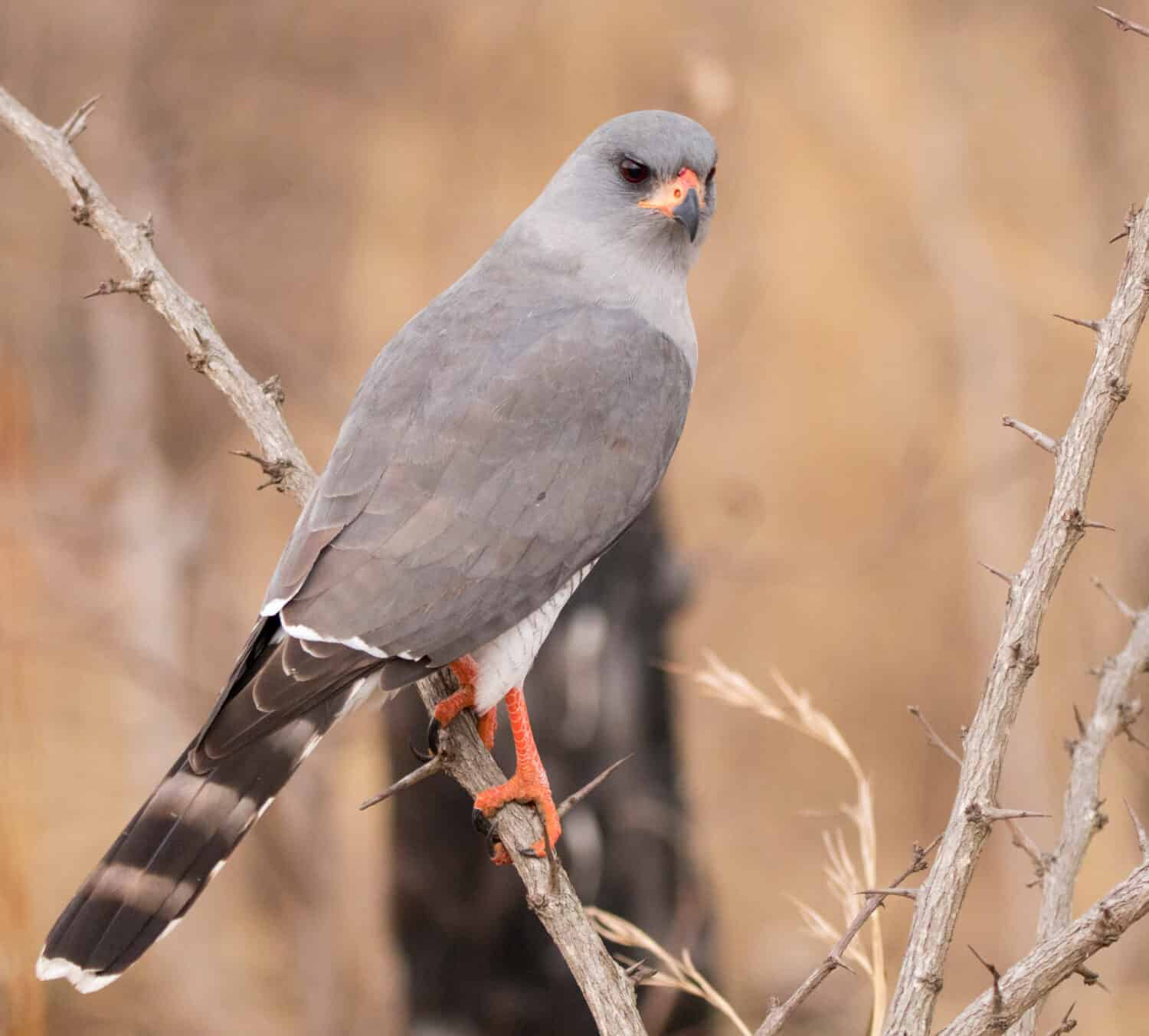
The dark-chanting goshawk prefers tall, moist woodlands
©Bruce Crossey/Shutterstock.com
As its name suggests, the dark-chanting goshawk is darker in color and known for its chant-like whistling songs. This bird of prey is a medium-sized hawk and breeds in Sub-Saharan Africa. Dark-chanting goshawks live in savannahs and open woodlands but avoid dense forests and deserts. They prefer tall, moist woodlands where they perch among the canopy. An isolated subspecies population is declining in Morocco.
Dusky Hummingbird – Phaeoptila sordida
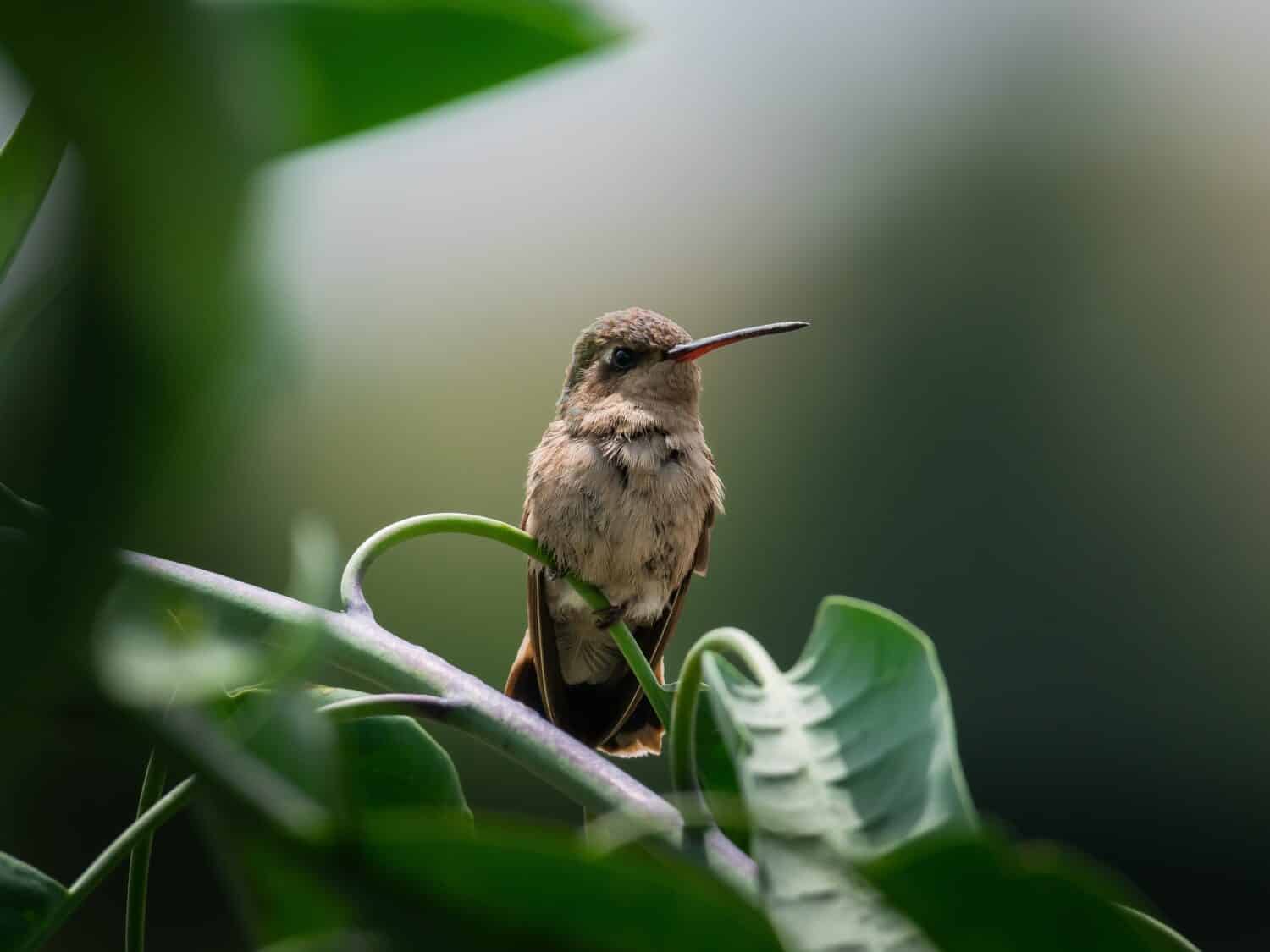
Dusky hummingbirds are endemic to Mexico
©tferka/Shutterstock.com
The dusky hummingbird is a gray, green, and bronze hummingbird lacking the iridescent gorget. This bird is endemic to Southwestern Mexico, from Michoacan to Oaxaca. And they live in arid scrub and other semi-open habitats. Look for them feeding on nectar from the mid to upper tree levels, where it spreads and wags its tail while it eats. These hummingbirds are relatively quiet, except for soft buzzy chips.
Dartford Warbler – Curruca undata
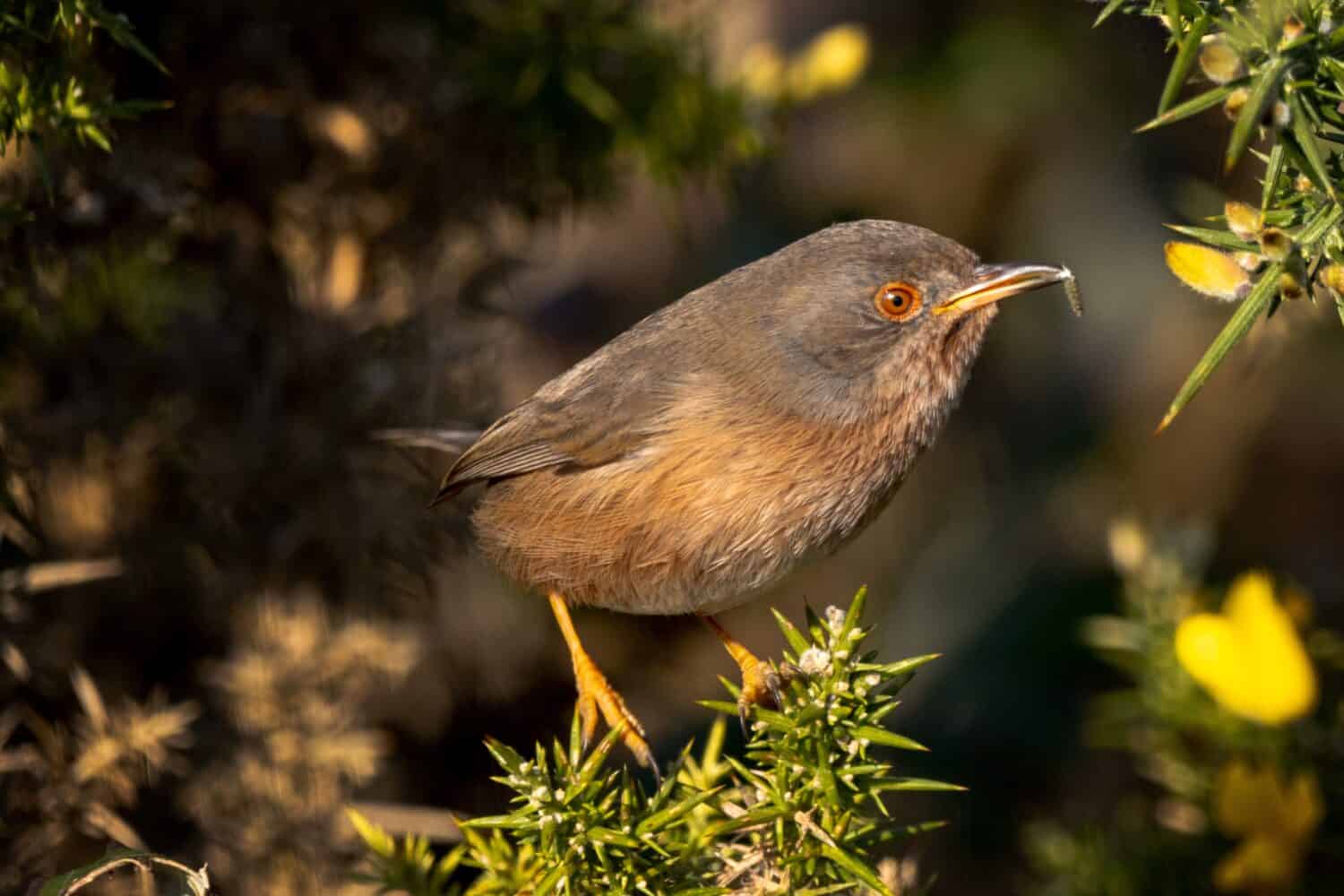
Dartford warblers inhabit open fields with scrub
©Nath_Does_Nature/Shutterstock.com
This grayish-brown warbler is a small passerine with a long tail compared to other warblers. This species is relatively rare, and its largest population lives in the Iberian Peninsula. You can also find it in France, Italy, Southern England, Wales, Morocco, and Algeria. The Dartford warbler inhabits open fields with scrub brush. And you are likely to find it in heather near the ground.
Incredible Birds That Start With D: A Recap
| Common Name | Scientific Name |
|---|---|
| Dark-eyed Junco | Junco hyemalis |
| Dickcissel | Spiza americana |
| Double-crested Cormorant | Nannopterum auritum |
| Dovekie | Alle alle |
| Downy Woodpecker | Dryobates pubescens |
| Dunlin | Calidris alpina |
| Dusky Flycatcher | Empidonax oberholseri |
| Dusky Grouse | Dendragapus obscurus |
| Dusky-capped Flycatcher | Myiarchus tuberculifer |
| Dalmatian Pelican | Pelecanus crispus |
| Dark-billed Cuckoo | Coccyzus melacoryphus |
| Dark-chanting goshawk | Melierax metabates |
| Dusky Hummingbird | Phaeoptila sordida |
| Dartford Warbler | Curruca undata |
The photo featured at the top of this post is © Bruce Crossey/Shutterstock.com
Thank you for reading! Have some feedback for us? Contact the AZ Animals editorial team.






